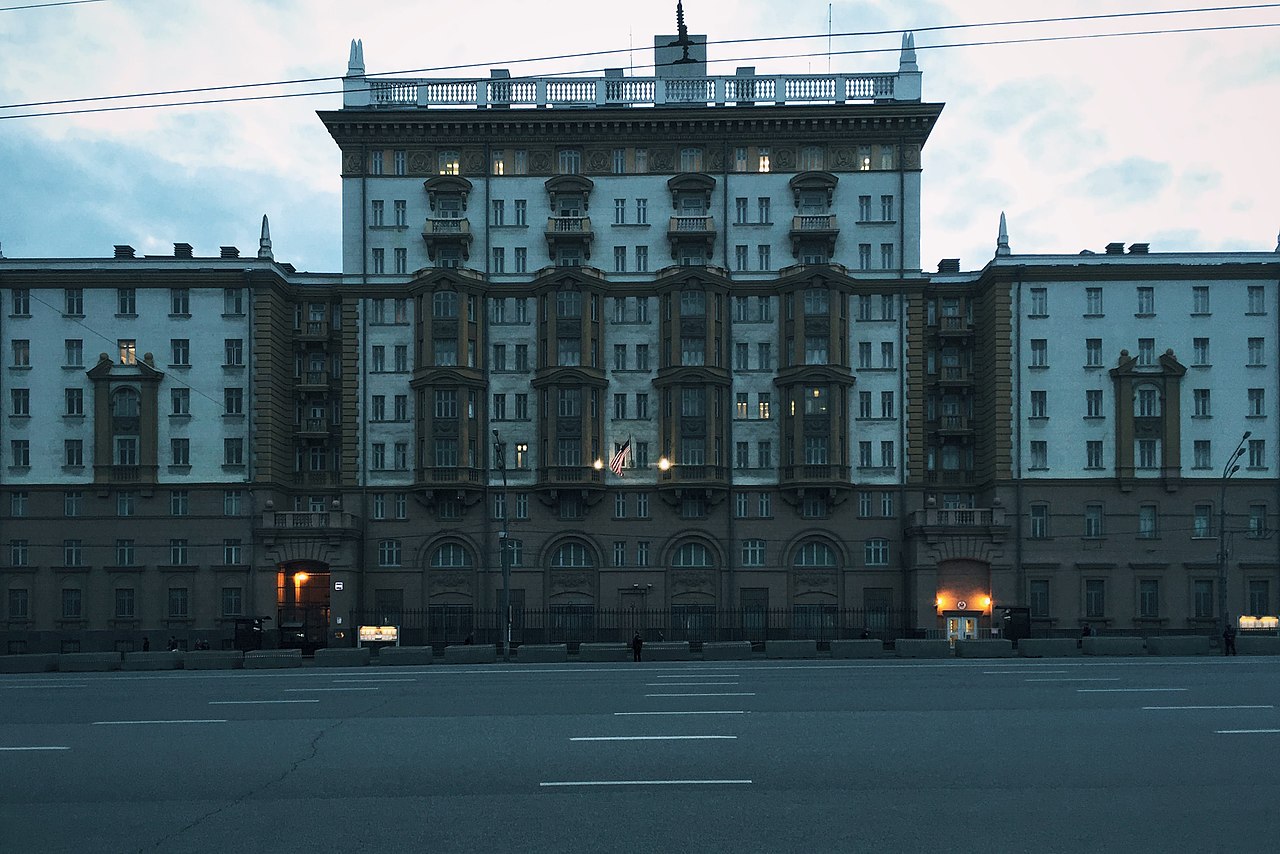 U.S. Embassy in Moscow. Image Credit: Gennady Grachev / Flickr
U.S. Embassy in Moscow. Image Credit: Gennady Grachev / Flickr
Restarting U.S.-Russia Dialogues By Pausing Diplomatic Expulsions
Following the agreement between Putin and Biden in Geneva last month, both the Russian and U.S. ambassadors have recently resumed their respective posts in Washington D.C. and Moscow. The ambassadors’ return is a positive and necessary step towards improving bilateral relations but also underlines the long road still ahead. Tensions remain high and years of tit-for-tat expulsions have shrunken the State Department’s diplomatic footprint in Russia and restricted open communication.
To achieve a more stable relationship with Russia, reopening consulates and reinstating expelled diplomats should be a priority. Consequently, in order to prevent a return to the current situation, the Biden administration should reconsider using diplomatic expulsions as a cost-imposition tool against Russia.
Precedents and escalation
The U.S. and Russia have engaged in diplomatic expulsions and counter-expulsions before, especially during the Cold War. When President Reagan expelled over fifty Soviet Union diplomats over reports of espionage, Gorbachev prohibited 260 local staff from returning to work in retaliation. Most eviction cases stemmed from espionage feuds, despite the general tolerance for active intelligence operatives working as “diplomats.” In the last five years, however, diplomatic ejections have not only increased, but have also gained more media coverage and sparked an escalatory pattern of retaliations from Russia. The uptick began with the Obama administration’s decision to close two Russian compounds and declare thirty-five Russian intelligence operatives as “persona non grata” in response to Russian election interference.
Since then, over 100 Russian diplomats have left the U.S. In 2017, Putin retaliated by ordering the U.S. diplomatic mission in Moscow to cut staff by 755 people. Consequently, this past spring, he formally designated the U.S. as an “unfriendly state” and banned it from hiring Russian nationals at any diplomatic facility. Currently, Russia’s consulates in San Francisco and Seattle sit empty. Of the United States’ four outposts in Russia, only its embassy in Moscow remains fully operational, though it will be suspending consular services starting in August.
Long-term consequences
With Russian malign activities and international law violations on the rise, it is no surprise that the U.S. has made increasing attempts to deter Putin’s behavior through diplomatic expulsions. Compared to military interventions, diplomatic expulsions are low-risk options to curb Russian aggression and in the short-term, the cost of weaponizing expulsions seems low. The problem, however, lies in the long-term.
First, broken diplomatic channels have subsequently stymied dialogues between state actors. In a bilateral relationship already fraught with disagreements and tension, open lines of communication are vital in building understanding, conveying national interests, and making sure miscalculations don’t lead to a military conflict. Communication skills are also deteriorating: diminished opportunities for consistent face-to-face engagement have kept the U.S. from training foreign service officers and experts to better engage with Russia.
Second, suspended diplomatic operations have left U.S. officials in the dark on Russian activity beyond Moscow. Vladivostok, for example, is now an acute blind spot for the Biden administration. Insufficient personnel in the Russian Far East this past February meant no eyes on the ground during one of the biggest protest movements the country has seen in years. Similarly, the U.S. lost a convenient position from which to monitor the contentious Northern Sea Route and keep tabs on Russia’s nearby borders with China and North Korea.
Third, the United States’ weakening presence in Russia has had wide-reaching repercussions beyond official government diplomacy. Ultimately, the U.S. has been left out of touch with Russian society at large and vice-versa; a fact that has arguably worked in Putin’s favor as he seeks to diminish Western influence in Russia and increase anti-American sentiment. The situation has made public diplomacy efforts, which are key to connecting with local populations and officials, all the more challenging. Soon, what diplomats remain in Russia won’t even be able to travel freely. Cooperative exchanges between non-government actors have fared no better, even prior to the 2020 COVID-19 lockdowns. With no consulates to issue visas or provide citizen services, academics, companies, non-profits, and scientists have struggled to work, study, and travel in Russia.
Next Steps
With formal communication outlets so undermined, any hope of stabilizing U.S.-Russia relations necessitates re-opening U.S. consulates in Russia and negotiating to lift the Russian national hiring cap. These steps should not be seen as an exoneration of Russia’s norm-challenging and hostile actions. Instead, they signal a commitment to maintaining normal relations with Russia and prioritizing international stability.
Likewise, the Biden administration should reciprocate and allow Russian diplomats to return to their posts in the U.S. Lastly, it is time to reassess the diminishing returns of confronting Russian transgressions to the detriment of diplomatic missions and develop more effective deterrents to bad Russian behavior. Years of cyclical expulsions have underlined the value of a fully staffed diplomatic outpost, and, more importantly, the costs of an empty one.





